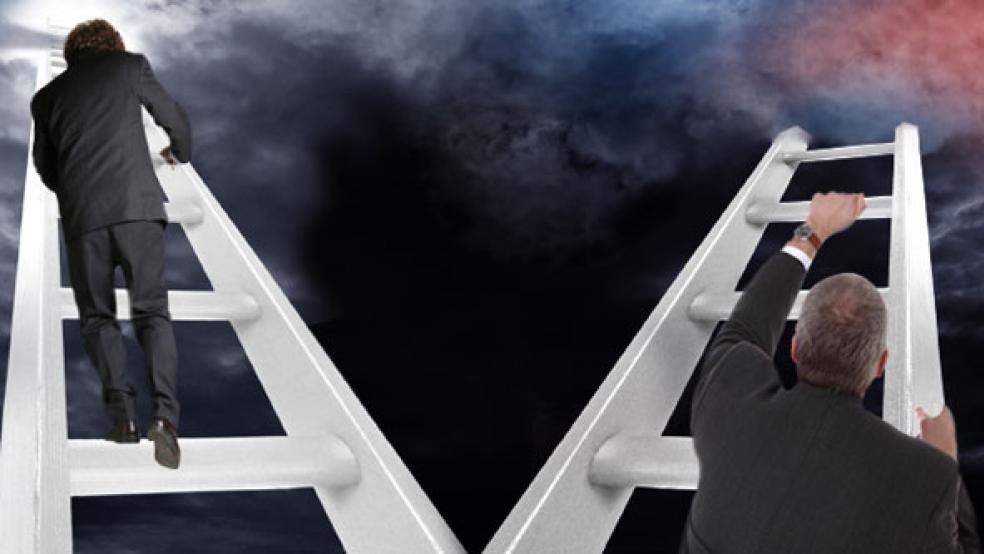Vice President Joe Biden praised presidential candidate Bernie Sanders recently for speaking credibly about the “enormous concentration of wealth in a small group of people.” Income inequality — and the promise to do something about it — has become a standard component of both Democratic and Republican candidates’ platforms.
Stump speeches have largely centered on higher tax rates and higher minimum wages as potential “solutions.” Yet each of those campaign-trail promises would also bring unintended economic consequences — such as slower economic growth and more corporate inversions — that make the policies more difficult to actually implement.
There is, however, one politically viable policy that could help reduce income inequality: regulatory reform.
Related: Presidential Candidates are Ignoring the Economy's Most Ominous Statistic
Statistics about the concentration of income going to the top 1 percent of earners are indeed striking: In 1980, 10 percent of income in the United States went to the top 1 percent of earners; today, roughly 25 percent of it does. But what can a president do about this trend?
Our new research explores how regulation relates to income inequality. Regulations, which erect barriers to entry and make it difficult for entrepreneurs at the bottom rungs of the income distribution to start a business, may be one factor increasing income inequality. Using data from the World Bank, we found that countries with more stringent entry regulations tend to experience higher levels of measured income inequality and higher shares of income going to the top 10 percent of earners, even after controlling for other potential determinants of inequality.
When governments regulate the entry of new businesses, through occupational licenses or extensive permitting processes, it creates barriers that make it prohibitively costly for some low-income earners to join the market. These regulations frequently require applicants to take exams or attain a minimum level of education — activities that are both expensive and time-consuming. The main rationale for these regulations is to ensure quality and to protect the health and safety of consumers. However, as another recent study found in an extensive review of empirical studies of occupational licensing, the quality of service either doesn’t change or even deteriorates when licensing is introduced.
Related: U.S. Companies Are Dying Faster Than Ever
In the United States, occupations such as pest control applicators, truck drivers and cosmetologists require licenses in all states. A few occupations are licensed in only one state. In Louisiana, for example, an entrepreneur cannot become a florist without passing a licensing exam that includes a one-hour written test and a four-hour practical test. The Institute for Justice recently studied 102 licensed low-and-moderate income occupations across the United States and found that licensing processes “require of aspiring workers, on average, $209 in fees, one exam, and about 9 months of training and education.”
And yet, aspiring workers in the United States face fewer regulations than those in some other parts of the world. Haiti, for example, has some of the most stringent entry regulations. Opening a business in Haiti requires the average entrepreneur to spend 235 percent of his or her income, wait 97 days and complete 12 steps in the approval process. Opening a business in the United States, on the other hand, requires the average entrepreneur to spend 1 percent of income, wait about six days and complete six steps in the approval process. Haiti also has a high measured level of income inequality. In 2012, its measured income inequality was over 60 percent higher than in the United States.
Entry regulations can increase income inequality in at least two ways: When entrepreneurs cannot legally enter the market because of the cost of obtaining necessary licensing or approval, they may choose to enter a profession that isn’t licensed — where their talents may not be used as well and they receive a lower income. Second, if entrepreneurs cannot legally enter the market, they may choose to operate illegally — which, again, ultimately means a lower income than they would have otherwise. For example, if an entrepreneur opens a pest control business illegally, she must use real resources both to enforce contracts and to hide from law enforcement.
Related: 10 Best Cities to Start a Business
Whether the increasing concentration of income in the upper end of the income distribution is a long-term problem that requires a solution depends on the causes of the trend — something economists are studying feverishly. If, for example, rising income inequality is primarily caused by a shift in desirable traits in the labor force toward information technology skills, then what we are seeing is an adjustment, rather than a “new normal.” Conversely, if the trend is caused at least partially by regulations or other policies that favor those who are already in business or have high incomes, then we should expect to see more of the same until meaningful regulatory reform occurs.
Our research supports the theory that regulations are part of the problem, particularly in the way those regulations impact low-income entrepreneurs by creating barriers and limiting upward mobility. By removing these regulations, people on the bottom rungs of the income distribution can begin their climb. In fact, of all policy options that might reduce income inequality, regulatory reform may the easiest and most widely supported.
— Patrick A. McLaughlin is a senior research fellow with the Mercatus Center at George Mason University. Laura Stanley is an alumna of the Mercatus Center MA Fellowship. Both are authors of a new working paper on "Regulation and Income Inequality: The Regressive Effects of Entry Regulations."





